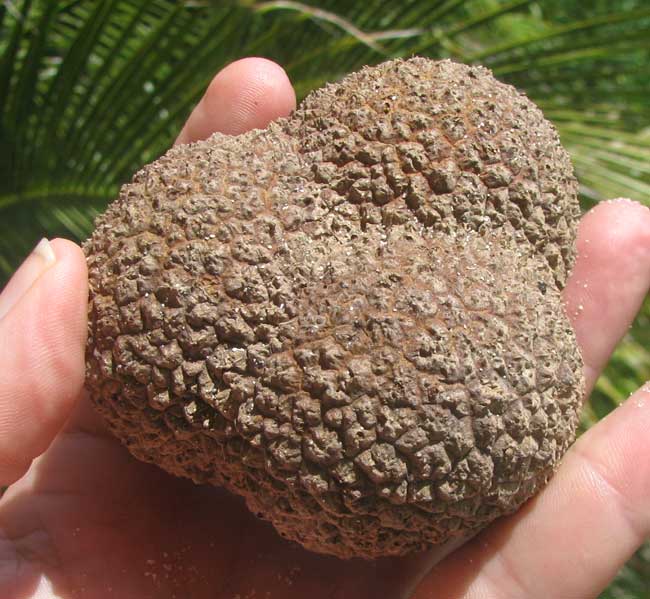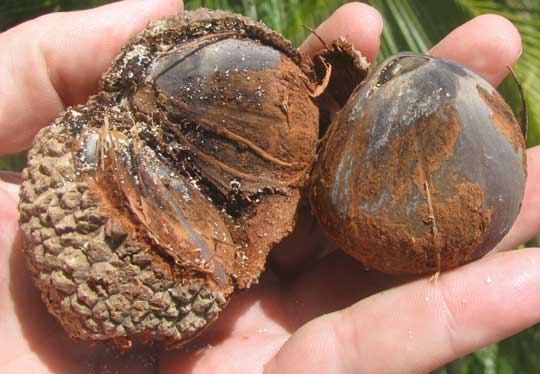Excerpts from Jim Conrad's
Naturalist Newsletter

from the October 30, 2011 Newsletter issued from Mayan Beach Garden Inn 20 kms north of Mahahual; Caribbean coastal beach and mangroves, ~N18.89°, ~W87.64°, Quintana Roo state, MÉXICO
SEA COCONUTS
It must have been the passage of Hurricane Rina this week that accounts for an amazing lot of seabeans floating onto our beach. Seabeans are seeds and fruits of many kinds deposited on shore by ocean currents, often from far away. There's a whole beachcombing subculture of seabean-collecting traveler known as seabeaners. The Seabean website is at http://www.seabean.com/.
This week that website helped me identify what's shown above. That's a fruit. Cracking it open you see what's shown below:

The identification page, or Sea-Bean Guide, at the seabean site called our three-lobed fruit a Sea Coconut or Golf Ball, which didn't tell me much. But they also gave the technical name, which helped a lot. The fruit is produced by MANICARIA SACCIFERA.
And that's pretty interesting, because Manicaria saccifera is a palm tree not native to the Yucatán. It grows spottily from Belize to Brazil and Peru, so, taking into account our sea currents these days depositing much trash from Trinidad, Columbia and Venezuela, I'd guess that the fruit came from thereabouts.
Manicaria saccifera is a tall, stately palm famed as producing gigantic leaves -- up to 26ft long (8m). Where it grows, people often call it Palma Real, or Royal Palm, but here another palm species is better known by that name.
From pictures on the Internet it seems that typically this species' wave-deposited fruits bear only one or two seeds inside, instead of three like ours. All the seeds in our fruit were waterlogged and dead.
Manicaria saccifera mainly inhabits swamps and estuarine areas where rivers meet the ocean. Unfortunately these are precisely the places people like to convert to banana production, so these palms are threatened by enormous habitat loss. Earlier their big leaves were favored by the poor as roof thatching but now the trend is toward plastic and tin, which is easier to collect.
A seabeaner in Florida blogs that Manicaria saccifera's fruits and seeds are among the most commonly found on the Eastern Florida coast. Elsewhere I read that finding a Sea Coconut covered by the bumpy outer husk, as ours is, is rare.